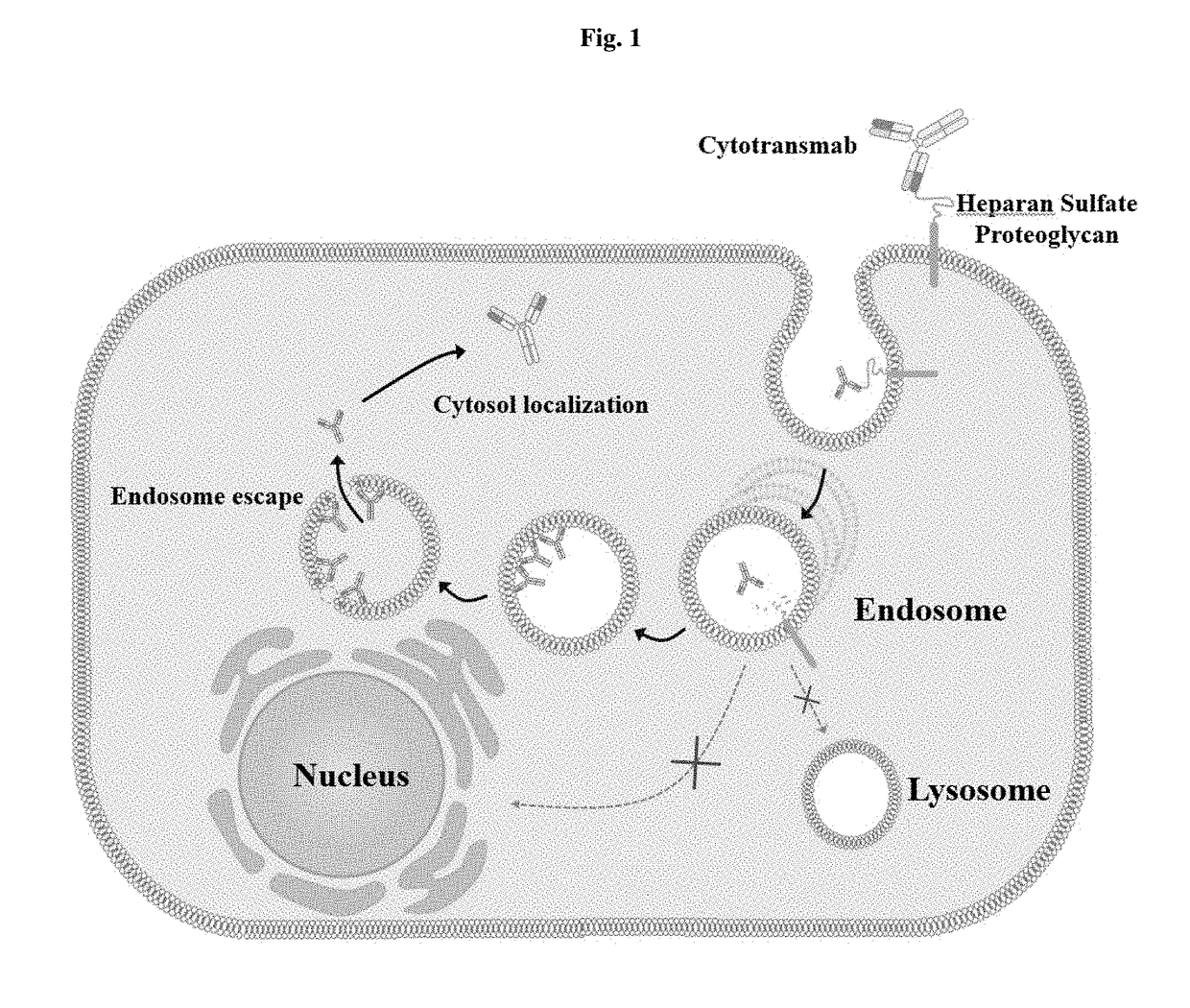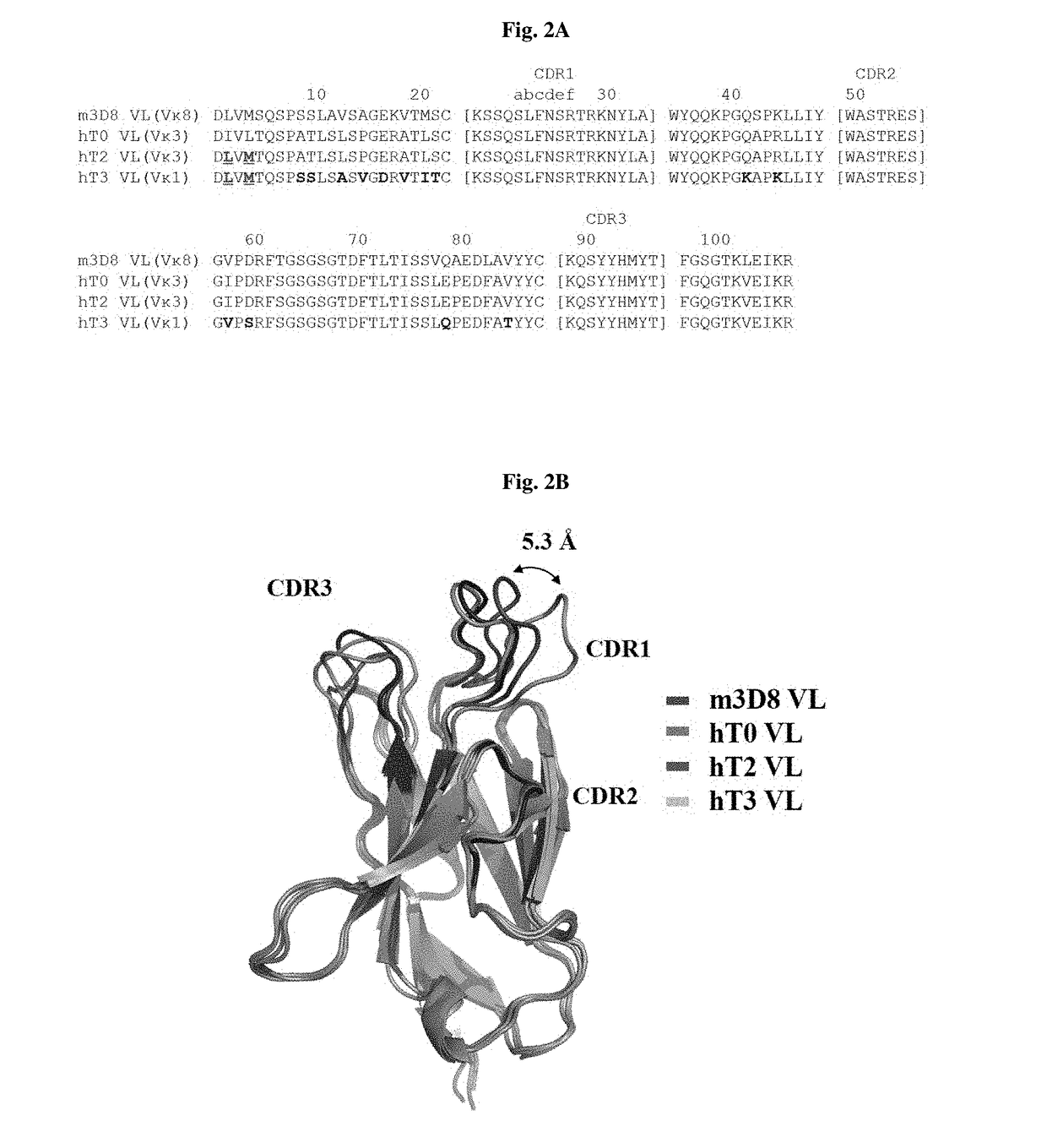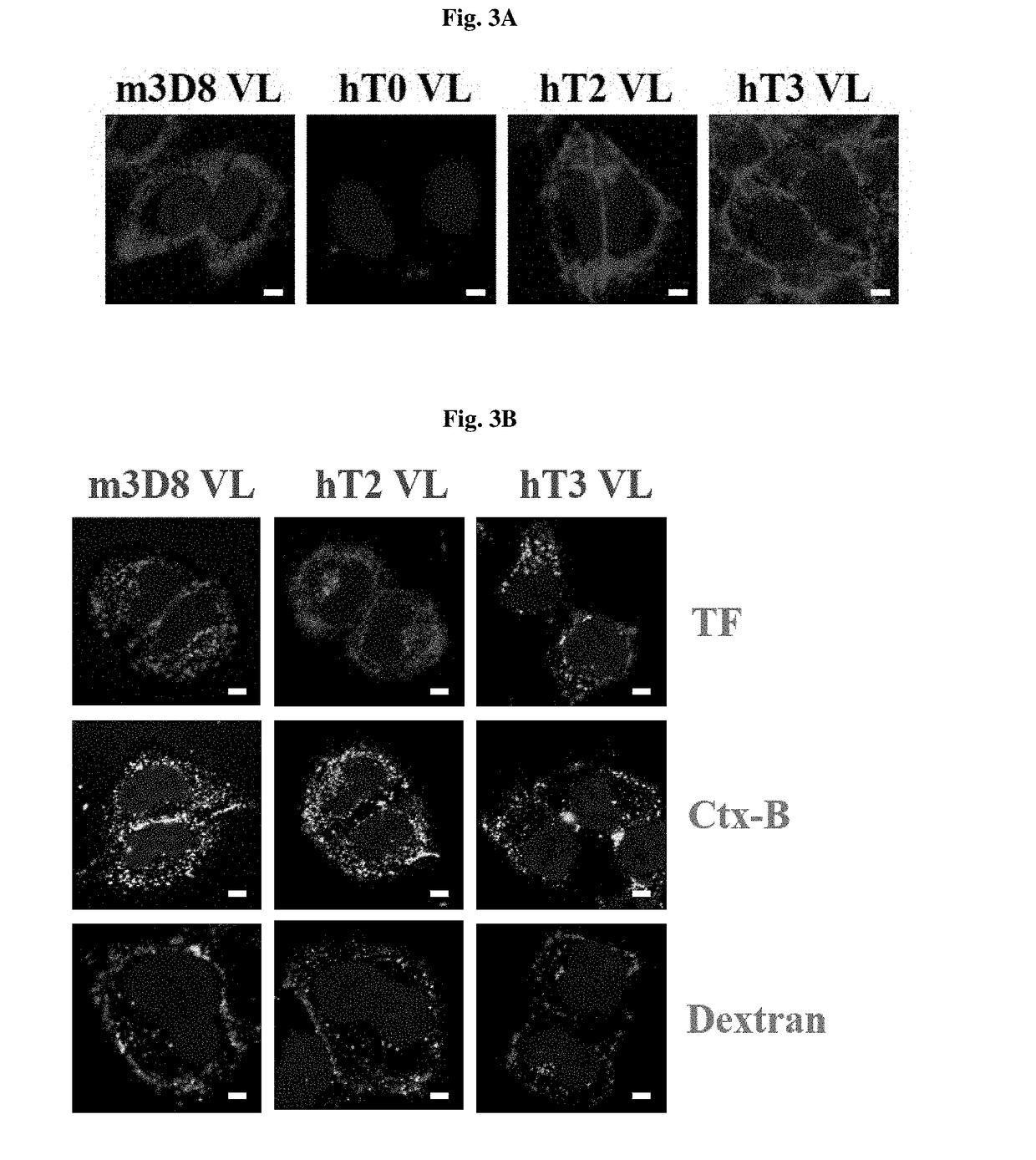Method for positioning, in cytoplasm, antibody having complete immunoglobulin form by penetrating antibody through cell membrane, and use for same
a technology of cytoplasm and antibody, which is applied in the direction of antibody medical ingredients, instruments, drug compositions, etc., can solve the problems of conventional antibodies that cannot directly penetrate living cells, antibodies and macromolecular bio-drugs, and cannot pass the hydrophobic cell membrane, etc., to inhibit the activity of ras, no cytotoxicity, and stable ability to penetrate the cytosol
- Summary
- Abstract
- Description
- Claims
- Application Information
AI Technical Summary
Benefits of technology
Problems solved by technology
Method used
Image
Examples
example 1
for Development of Cytosol-Penetrating Humanized Light-Chain Variable (VL) Single Domain
[0177]FIG. 1 is a schematic view showing the concept of an intact immunoglobulin antibody, named “cytotransmab”, which penetrates a cell and localizes in the cytosol. To realize this antibody and understand the cytosol-penetrating ability of humanized antibody light-chain variable regions, reference was made to conventional studies on the correlations between the cytosol-penetrating ability of the mouse light-chain variable single domain m3D8 VL and CDRs corresponding to light-chain variable region fragments (Lee et al., 2013).
[0178]FIG. 2A shows the results of analysis of a sequence including a clone used in a process of obtaining the improved, cytosol-penetrating humanized light-chain variable single domain hT3 VL, which binds stably to a humanized antibody heavy-chain variable region, from the mouse light-chain variable region m3D8 VL.
[0179]Specifically, based on a comparison of cytosol-penetr...
example 2
n and Purification of Humanized Light-Chain Variable (VL) Single Domain Having Cytosol-Penetrating Ability
[0183]To compare the actual cytosol-penetrating abilities of hT2 VL and hT3 VL designed in the above Example, humanized light-chain variable (VL) single domains were purified.
[0184]Specifically, the cytosol-penetrating light-chain variable single domain containing a Pho A signal peptide at the N-terminus and a protein A tag at the C-terminus was cloned into a pIg20 vector by NheI / BamHI restriction enzymes, and then the vector was transformed into E. coli BL21(DE3)plysE for protein expression by electroporation. The E. coli was cultured in LBA medium containing 100 ug / ml of ampicillin at 180 rpm and 37° C. until the absorbance at 600 nm reached 0.6-0.8. Then, the culture was treated with 0.5 mM of IPTG (isopropyl β-D-1-thiogalactopyronoside, and then incubated at 23° for 20 hours to express the protein. After expression, the culture was centrifuged by a high-speed centrifuge at 8...
example 3
ion of Cytosol-Penetrating Ability and Cell Penetration Mechanism of Cytosol-Penetrating Humanized Light-Chain Variable (VL) Single Domain
[0185]FIG. 3A shows the results of confocal microscopy observation of the cytosol-penetrating ability of light-chain variable single domains.
[0186]Specifically, in order to verify the cytosol-penetrating abilities of m3D8 VL, hT0 VL, hT2 VL and hT3 VL, a cover slip was added to 24-well plates, and 5×104 HeLa cells per well were added to 0.5 ml of 10% FBS (Fetal bovine Serum)-containing medium and cultured for 12 hours under the conditions of 5% CO2 and 37° C. When the cells were stabilized, each well was treated with 10 μM of m3D8 VL, hT0 VL, hT2 VL or hT3 VL in 0.5 ml of fresh medium, and incubated for 6 hours under the conditions of 37° C. and 5% CO2. Next, the medium was removed, and each well was washed with PBS, and then treated with a weakly acidic solution (200 mM glycine, 150 mM NaCl, pH 2.5) to remove proteins from the cell surface. Next,...
PUM
| Property | Measurement | Unit |
|---|---|---|
| Length | aaaaa | aaaaa |
| Length | aaaaa | aaaaa |
| Length | aaaaa | aaaaa |
Abstract
Description
Claims
Application Information
 Login to View More
Login to View More - R&D
- Intellectual Property
- Life Sciences
- Materials
- Tech Scout
- Unparalleled Data Quality
- Higher Quality Content
- 60% Fewer Hallucinations
Browse by: Latest US Patents, China's latest patents, Technical Efficacy Thesaurus, Application Domain, Technology Topic, Popular Technical Reports.
© 2025 PatSnap. All rights reserved.Legal|Privacy policy|Modern Slavery Act Transparency Statement|Sitemap|About US| Contact US: help@patsnap.com



